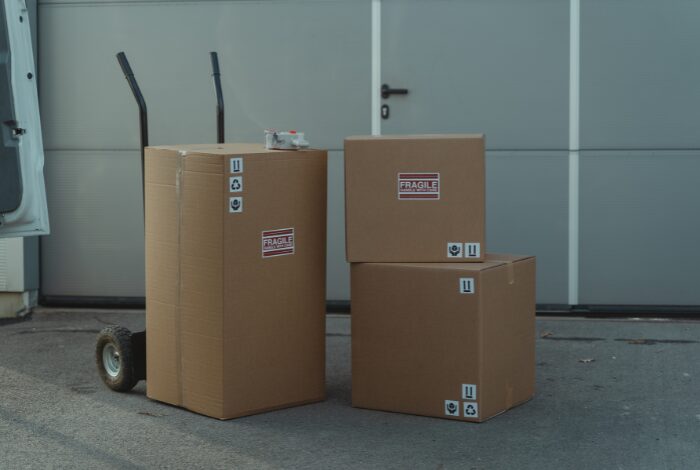Understanding transit packaging symbols
In recent years, more attention has been given to recycling symbols on consumer packaging. However, if you’ve worked with corrugated transit packaging, you have likely encountered various other symbols, too.
But what do these symbols mean? And should you be incorporating them into your packaging designs?
This guide offers a comprehensive overview of the most commonly used symbols in transit packaging.
Contents
Usage rights and legal considerations
Please be aware that some of these icons are governed by copyright or industry standards and may require permission to use. You are responsible for ensuring you have the appropriate rights or permissions and that any usage complies with the relevant guidelines.
Correct and lawful application of these symbols is essential. Suttons Performance Packaging cannot be held responsible for any misuse, legal consequences, or damage resulting from improper symbol usage.
We recommend contacting us directly if you’re unsure how to use a specific symbol.
Symbols for product protection
These symbols are typically used to communicate important information about how packaged goods should be handled to prevent damage. Examples include symbols for fragility, moisture sensitivity, orientation, and more.
You can combine multiple symbols to reinforce critical handling instructions, such as combining ‘Fragile’ with ‘Handle with Care’ to ensure clarity.
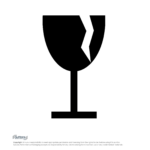
A widely used and recognised symbol that indicates the contents of the packaging are fragile (not that they are necessarily made of glass). The symbol is sometimes accompanied by the word ‘Fragile’.
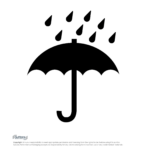
The umbrella with raindrops symbol on the packaging indicates that the box (and its contents) should be kept dry. A variation showing just the umbrella can also be used.
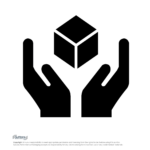
Two hands surrounding a box tell the user or handler that the packaging and contents should be handled carefully.

A horizontal line with two vertical arrows pointing upwards indicates which way up the packaging should be kept throughout storage and transit. It can sometimes be used with the text “This Way Up”.

A knife with a cross either next to or striking through the symbol indicates that the packaging should not be opened with a knife as it may damage the contents within.
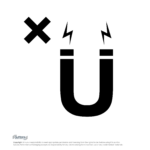
A magnet indicates that the packaging should not be placed near magnets. It could contain certain electronics or specialist equipment sensitive to magnetic forces.

This symbol is another way of indicating to the handler that they should take care when handling and to ensure that they do not drop it.
Handling and storage symbols
While some of these overlap with product protection, this category of symbols focuses on illustrating safe handling, stacking, and storage practices.
You can combine several symbols as needed, but be cautious, having too many symbols on your packaging may lead to confusion, or the key messages you’re trying to convey may be overlooked.

Two bars with a number above provides information on how high the boxes can be safely stacked. The number can therefore vary depending on the nature of the packaging and its contents.
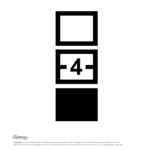
A more detailed version of the above packaging symbol, a tower of boxes with a number in the middle, can indicate safe stacking height or sometimes weight. The number in the middle box can indicate stacking height or provide a weight.
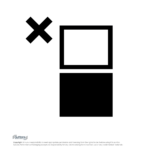
A symbol showing boxes stacked next to a cross (or sometimes the cross is over the main illustration) indicates that users and handlers should not stack the packaging.
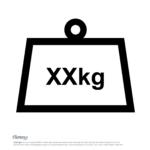
A weight symbol indicates the weight of the packaging (including the contents). This can allow users and handlers to decide how best to handle the packaging and determine which boxes (if there are different variants) they require. The number within the symbol can be changes as appropriate.
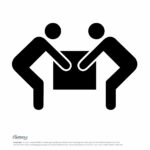
Rather than showing a weight symbol, two people lifting a box can indicate that it is too heavy for a single person to carry.
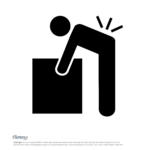
Similar to the symbol above, this packaging symbol cautions people to be careful when lifting the packaging due to its heavy contents and/or large size.

The symbol of a pallet truck with boxes stacked on it indicates to the user that this form of assistance should be used to move multiple items at a time.

This symbol indicates that a pallet truck should not be used to transport this packaging and its contents (as doing so may damage the items within).
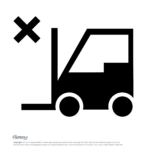
An image of a forklift alongside a cross or with a strike-through indicates that the packaging and its contents are not suitable for moving using a forklift.
Additional packaging symbols
Apart from the core categories of transit and handling symbols, several less commonly used but still essential symbols appear on corrugated packaging.

The exclamation mark within a triangle is the general symbol for caution. This can be applied to a lot of different scenarios, so is often qualified with some explanatory text underneath.

This symbol indicates that the packaging is ESD safe, in that it is protecting the contents from electrostatic discharge. It is commonly found on anti-static packaging.
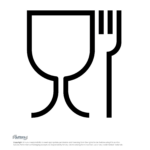
a fork next to a glass is the international symbol of “food safe” material. It effectively means that the material used in the product or the packaging is safe for food contact, and will not leach dangerous substances, etc.
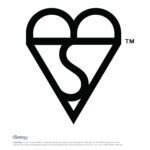
The “Kitemark” logo, resembling a kite, is a trademark of the British Standards Institute and indicates that the product within the packaging meets specific standards (ascertained by ongoing testing). Please note that permission to use this information is required.
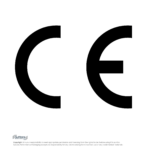
The CE logo is used to declare that the product within the packaging meets the applicable requirements of specific CE directives (this only applies to particular product types). Please note that permission for use is required.
Summary
The collection of symbols provided above is not an exhaustive list. Depending on your specific industry or product, you may need to use additional or specialised symbols on your packaging.
Nevertheless, choosing and applying the right combination of transit packaging symbols can significantly improve how your packaging performs throughout your logistics chain.
If you have any questions about these symbols or need help identifying which ones you should be using, please do not hesitate to get in contact with us today.
